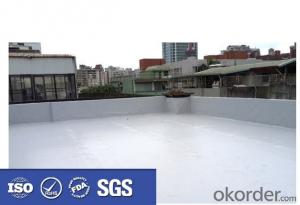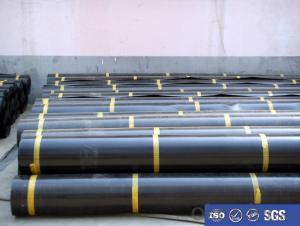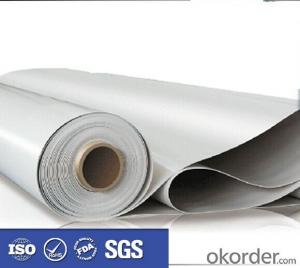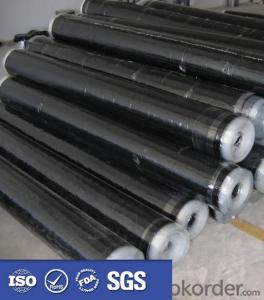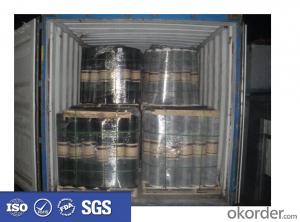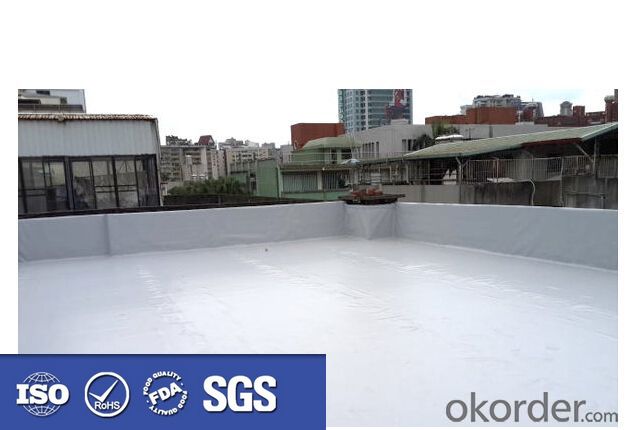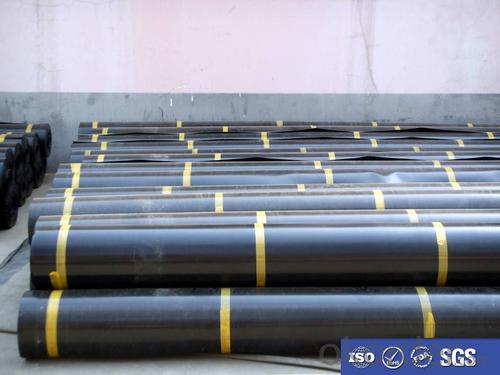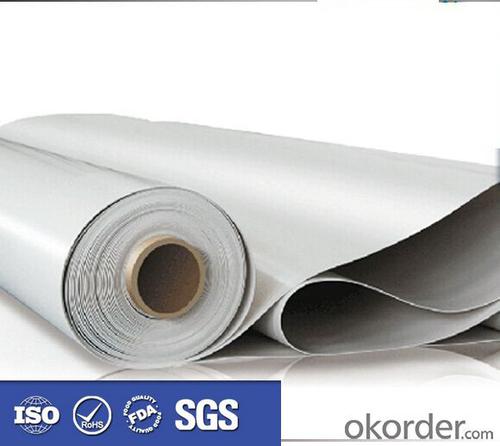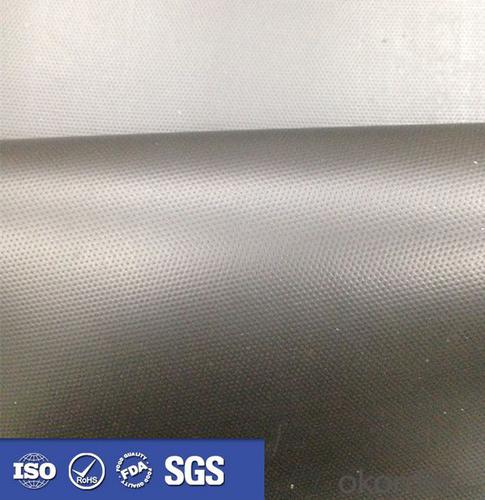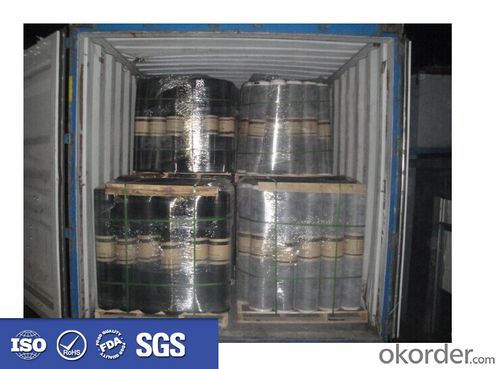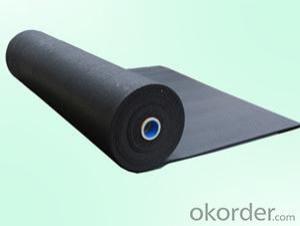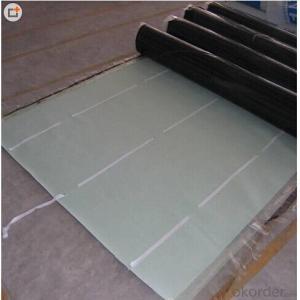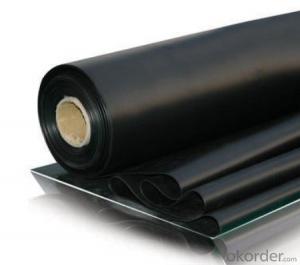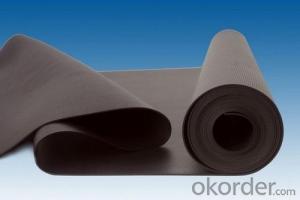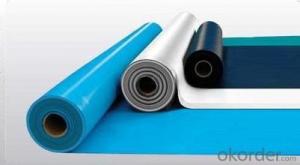EPDM Waterproof Membrane Foundation Elastomeric
- Loading Port:
- Qingdao
- Payment Terms:
- TT OR LC
- Min Order Qty:
- 2000 m²
- Supply Capability:
- 8000000 m²/month
OKorder Service Pledge
OKorder Financial Service
You Might Also Like
Description Of EPDM Waterproof Membrane Foundation Elastomeric:
Self adhesive waterproof rolling material:
thickness:1.2/1.5/2.0mm
length/roll:10/20m
width/roll:1.02m
Low temperature:-15 -20,-30
Main Features of EPDM Waterproof Membrane Foundation Elastomeric:
1) High tear
2) High puncturing strength
3) Great temperature resistance.
4) High dimensional stability
Specifications of EPDM Waterproof Membrane Foundation Elastomeric:
Material | EPDM Waterproof Membrane Foundation Elastomeric |
Size | 1.2m (width)*20m (length) or customized, weldable type 2.05m or 4m width |
Thick | 1.2mm, 1.5mm, 2.0mm |
Type | Vulcanized & Weldable |
Pattern | Non-reinforced (homogeneous) |
Certificate | ISO9001/14001 |
Applications of EPDM Waterproof Membrane Foundation Elastomeric:
1.It is widely used in civil and industry construction.
2.The waterproof,dampproof of the roofs,basements,toilets etc;
3.And the waterproofing of subway,underground,bridges,car parking,tunnels,reserviors,pool etc.
4.SBS modified bitumen waterproof membrane is specially suitable to the building waterproofing in cold area and to the buildings of changeable constructions
5.APP specially suitable to areas of high temperature and of strong sunshine.
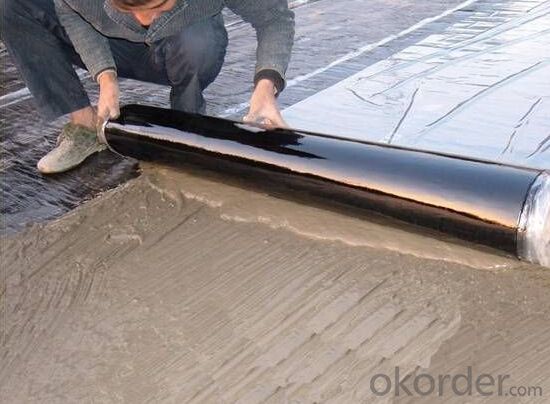


FAQ:
1. What are we supplying?
We are specialized in producing Colorful Asphalt Roof Shingle, SBS/APP modified bitumen waterproof membrane, Self adhesive bitumen waterproof membrane, PVC waterproofing membrane, EPDM rubber roofing membrane, Single Component Polyurethane Waterproof Coating, and Spray Polyurea Waterproof Coating.
2. How Many years experience do we have?
We have been exported to more than 20 countries in the past 15 years.
3. How long do we usually reply your request?
We always reply our customer within 24 hours.
- Q: Can a waterproofing membrane be used on exterior walls?
- Yes, a waterproofing membrane can be used on exterior walls. A waterproofing membrane is designed to provide a barrier against water infiltration and can be applied to various surfaces, including exterior walls. It helps prevent water from seeping into the walls and causing damage such as mold, mildew, or structural issues. By creating a protective layer, a waterproofing membrane can enhance the durability and longevity of the exterior walls, especially in areas prone to heavy rainfall or high humidity. However, it is important to choose the appropriate type of waterproofing membrane that is suitable for exterior wall applications and follow the manufacturer's instructions for proper installation to ensure optimal effectiveness.
- Q: Can a waterproofing membrane be used in swimming pools or other water features?
- Yes, a waterproofing membrane can be used in swimming pools or other water features to prevent water leakage and maintain a watertight environment.
- Q: Can a waterproofing membrane be used for elevator shafts?
- A waterproofing membrane is an effective solution for elevator shafts. Elevator shafts are prone to water infiltration, which can harm the building's structure and the elevator system itself. By using a waterproofing membrane, water can be prevented from entering the shaft, safeguarding it against moisture-related issues such as corrosion, mold, and mildew. Typically, the membrane is applied to the shaft's walls and floors, creating a barrier that blocks water. To ensure optimal effectiveness and durability, it is important to select a waterproofing membrane specifically designed for elevator shafts. Moreover, proper installation and maintenance are crucial for the long-term performance of the waterproofing system. In conclusion, employing a waterproofing membrane for elevator shafts is a recommended measure to shield against water damage and uphold the elevator system's functionality and safety.
- Q: Can waterproofing membranes be used on retaining walls?
- Yes, waterproofing membranes can be used on retaining walls. Waterproofing membranes are commonly used on retaining walls to prevent water infiltration and protect the structure from moisture-related issues such as seepage, efflorescence, and cracking. These membranes act as a barrier that prevents water from penetrating the retaining wall and causing damage. They are typically installed on the exterior side of the retaining wall, providing an additional layer of protection against water intrusion. Waterproofing membranes come in various forms, such as sheet membranes, liquid-applied membranes, and cementitious coatings, and can be chosen based on the specific needs and requirements of the retaining wall.
- Q: Can a waterproofing membrane be used for tunnels or subway systems?
- Tunnels and subway systems frequently encounter water infiltration as a result of the soil conditions or groundwater levels in their vicinity. To counteract this issue, a waterproofing membrane is commonly employed. This membrane serves as a protective shield, effectively obstructing water from permeating into the tunnels or subway systems. Its installation is typically carried out on the outer surfaces of the tunnel walls and roof, establishing an impervious seal. By doing so, it aids in the prevention of corrosion, decay, and harm to the structural components of the tunnels, guaranteeing the durability and safety of these subterranean infrastructures.
- Q: Can waterproofing membranes be used on green roofs?
- Yes, waterproofing membranes can indeed be used on green roofs. In fact, they are an essential component of green roof systems. Green roofs are designed to have a layer of vegetation and growing medium on top of a waterproofing layer. This waterproofing layer prevents water from penetrating through the roof and causing damage to the building structure. Waterproofing membranes used on green roofs are specifically designed to withstand the unique challenges of such installations, including exposure to water, UV radiation, and root penetration. These membranes are typically made from durable materials such as PVC, TPO, or EPDM, which are known for their excellent waterproofing properties. Additionally, some waterproofing membranes used on green roofs may have additional features such as root resistance and UV stability, ensuring that the roof remains watertight and protected for an extended period of time. Overall, using waterproofing membranes on green roofs is crucial in creating a sustainable and long-lasting roofing system that provides both water protection and environmental benefits.
- Q: Can a waterproofing membrane be used for disaster relief structures?
- Indeed, disaster relief structures can benefit from the utilization of a waterproofing membrane. These membranes are specifically engineered to impede water infiltration and thus serve as an effective means of safeguarding temporary constructions in areas affected by calamities. Whether it be a transitory dwelling, medical establishment, or storage facility, a waterproofing membrane offers a formidable defense against precipitation, floods, and other water-related predicaments. By guaranteeing the dryness of the structure, it not only upholds the integrity of the relief edifice but also shields its inhabitants or stored provisions from water-induced harm. Moreover, waterproofing membranes are frequently lightweight, facile to install, and can be rapidly deployed during emergency scenarios, rendering them highly suitable for endeavors related to disaster relief.
- Q: Can a waterproofing membrane be used on swimming pools?
- Indeed, swimming pools can utilize a waterproofing membrane. It is a prevalent and efficient technique to guarantee the pool's impermeability. Normally composed of PVC or rubber, waterproofing membranes are specially crafted to obstruct water infiltration through the pool's walls or floor. They are applied as a fine layer or sheet across the pool's surfaces, forming a barrier that confines the water within. This approach diminishes the likelihood of leaks and water-related harm, safeguarding the longevity and functionality of the pool.
- Q: Can a waterproofing membrane be used in conjunction with vapor barriers?
- Yes, a waterproofing membrane can be used in conjunction with vapor barriers. In fact, it is often recommended to use both to ensure comprehensive protection against moisture. Waterproofing membranes are designed to prevent water from penetrating through a surface, such as a roof or foundation, while vapor barriers are designed to prevent the passage of water vapor. By using both, you can effectively prevent both liquid water and water vapor from causing damage to a structure. The waterproofing membrane acts as a physical barrier to prevent water from entering, while the vapor barrier prevents the buildup of moisture within the structure. This combination can be particularly beneficial in areas with high humidity or where there is a risk of water intrusion.
- Q: Can a waterproofing membrane be used in bridge decks or roadways?
- Yes, bridge decks and roadways can benefit from the use of a waterproofing membrane. This protective layer prevents water infiltration and increases the lifespan of the structure. Given the harsh weather conditions and heavy traffic that bridge decks and roadways face, a waterproofing membrane is essential. Water penetration can cause damage to bridge decks and roadways, including corrosion of steel reinforcements and deterioration of concrete. By applying a waterproofing membrane, a barrier is created to prevent water from seeping into the structural elements. This reduces the risk of corrosion and extends the durability of the bridge or roadway. Additionally, a waterproofing membrane can help prevent the formation of cracks and potholes, which are often caused by the freeze-thaw cycle and water penetration. By keeping the surface of the bridge deck or roadway dry, the membrane maintains its structural integrity and avoids costly repairs or premature replacement. It is important to consider factors such as material selection, installation techniques, and maintenance when using a waterproofing membrane in bridge decks or roadways. The chosen membrane should be compatible with the construction materials, and the installation process must be done correctly to ensure a watertight seal. Regular maintenance and inspections should also be done to identify any issues or damage to the membrane. This allows for timely repairs and ensures its effectiveness over time. Overall, using a waterproofing membrane in bridge decks or roadways is an efficient solution to protect against water damage and extend the lifespan of these critical infrastructure elements.
Send your message to us
EPDM Waterproof Membrane Foundation Elastomeric
- Loading Port:
- Qingdao
- Payment Terms:
- TT OR LC
- Min Order Qty:
- 2000 m²
- Supply Capability:
- 8000000 m²/month
OKorder Service Pledge
OKorder Financial Service
Similar products
Hot products
Hot Searches
Related keywords
